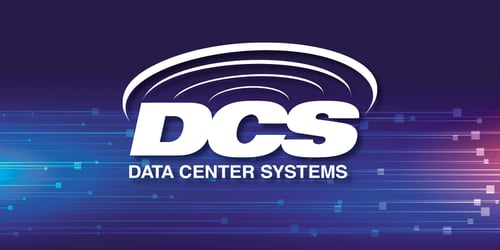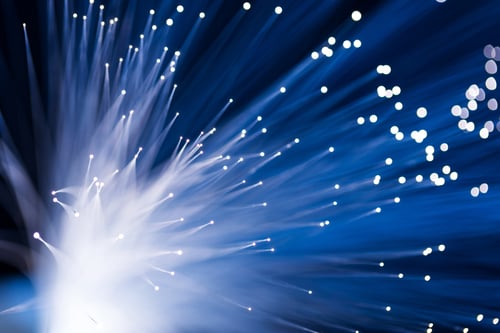Considerations for the Coming MegaCampus Gigawatt Data Center

Artificial intelligence (AI) and its insatiable appetite for computing power is driving the data center industry to contemplate a leap forward in scale and capability in the form of the “MegaCampus” and gigawatt data center.
“The Internet is entering an era of gigawatt-scale data center campuses to power artificial intelligence (AI), according to developers and industry groups, who say this approach provides the best opportunity to support AI workloads with renewable energy,” wrote Data Center Frontier's Founder and Editor at Large Rich Miller in April 2024. “Hyperscale tech companies are already seeking sites for campuses that can support a gigawatt of electric power capacity, equal to 1,000 megawatts or 1 billion watts, according to speakers at last week’s Data Center World conference.”
Miller followed up in June 2024 with an executive roundtable exploring this coming age of the gigawatt data center MegaCampus.
Let’s explore the key considerations for stakeholders involved in these massive projects, from understanding the fundamental concepts to navigating the complex landscape of power demands, sustainability, and regulatory challenges.
MegaCampus: A New Era in Data Center Infrastructure
The concept of a MegaCampus is revolutionizing the data center industry, offering unprecedented scale and efficiency. But what exactly sets a MegaCampus apart from traditional data center campuses, and why is this shift occurring?
- A MegaCampus in the data center industry refers to a vast, integrated complex of multiple data center facilities clustered together in a single location. These campuses typically span hundreds of acres and are designed to support massive computing power, often measured in hundreds of megawatts or even gigawatts.
“These MegaCampuses represent the next chapter for the largest players in cloud computing, who operate hyperscale campuses that concentrate massive amounts of computing,” Miller wrote. “These data center hubs enable companies to rapidly add server capacity and electric power, creating economies of scale. As AI boosts demand for computing power, these campuses are being super-sized.”
Traditional data center campuses are generally smaller in scale, often consisting of one or a few buildings with a total power capacity in the tens of megawatts.
MegaCampuses, on the other hand, are designed from the ground up to support exponential growth and unprecedented power requirements. They often include their own power substations, advanced cooling systems, and extensive networking infrastructure.
|
Feature |
MegaCampus Data Center |
Traditional Data Centers |
|
Scale |
Massive, housing millions of servers across hundreds of acres. |
Smaller facilities, typically with a few thousand servers. |
|
Location |
Often built in remote areas with access to cheap land and renewable energy. |
Usually located closer to population centers for lower latency. |
|
Power Consumption |
Can leverage economies of scale to negotiate lower energy costs and potentially utilize renewable energy sources. |
Higher energy costs due to smaller scale and reliance on traditional grids. |
|
Cost |
Higher start-up costs due to scale but potentially lower cost of ownership due to economies of scale and efficiency gains. |
Potentially higher cost of ownership over the long term costs for building and maintaining facilities. |
|
Latency |
Latency can be higher due to longer distance to users but some employ edge solutions to mitigate issues. |
Lower latency due to proximity to population centers. |
|
Security |
May have enhanced security due to centralized location and advanced security measures. |
Security measures can vary depending on the provider, but many have robust solutions. |
|
Scalability |
Easier to scale up capacity by adding additional facilities. |
Can scale by adding new facilities but not as efficiently as MegaCampuses. |
The Rise of Gigawatt Data Centers
As data consumption and processing needs head toward hyperdrive, a new class of data centers has emerged: Gigawatt Data Centers.
These facilities – with a power capacity of one gigawatt (1,000 megawatts or 1 billion watts!) are becoming increasingly popular among tech giants and cloud service providers.
To put a gigawatt data center into perspective, a single gigawatt is enough to power approximately 750,000 homes, 10 million 100-watt light bulbs, or over 100 million LED lights!
Gigawatt Data Centers offer several advantages over their smaller counterparts:
- Economies of Scale: Larger facilities can operate more efficiently, reducing costs per unit of computing power.
- Centralized Management: Consolidating operations in one location simplifies management and maintenance.
- Enhanced Performance: The concentration of resources allows for better interconnectivity and reduced latency. (Though the remote location of some MegaCampus facilities does pose latency issues, providers compensate by employing edge data center solutions.)
- Future Ready: These facilities are built to accommodate rapid growth and evolving technologies.
The popularity of Gigawatt Data Centers is driven by the insatiable appetite for data processing in areas such as cloud computing, artificial intelligence, and big data analytics. Tech giants like Google, Amazon, and Microsoft are leading the charge in developing these massive facilities to support their global operations and services.
AWS, for example, is developing a 960 MW data center on a 1,200-acre campus co-located with a nuclear plant in Pennsylvania.
Gigawatt Data Centers represent the future of large-scale computing infrastructure. As data processing demands continue to grow exponentially, these facilities will play a crucial role in supporting the digital economy and enabling transformative technologies.
The AI-Driven Power Demand
AI has emerged as a major driver of power demand in the data center industry. The computational requirements of AI workloads are pushing the boundaries of traditional data center capabilities, leading to the development of MegaCampuses and Gigawatt Data Centers.
AI workloads, particularly in areas like deep learning and neural networks, require immense computational power.
These workloads often involve processing vast amounts of data through complex algorithms, which translates to high energy consumption. For example, training a single large AI model can consume as much energy as several hundred U.S. homes use in a year.
The rise of AI is fundamentally changing data center design and operation in several ways:
- Specialized Hardware: Data centers are increasingly incorporating AI-specific hardware like GPUs and TPUs, which have different power and cooling requirements than traditional CPUs.
- Increased Power Density: AI workloads often require more power per rack, driving the need for advanced cooling solutions and power distribution systems.
- Scalability: The rapid evolution of AI technologies necessitates data centers that can quickly scale to meet growing computational demands.
Renewable Energy and Creative Power Solutions
The massive power requirements of MegaCampuses and Gigawatt Data Centers present both a challenge and an opportunity for sustainable operations.
“The biggest consideration for any new data center these days, especially a MegaCampus, is accessing grid-supplied power,” said Allen Rounds of Kohler in the roundtable. “Simply put, the country’s power grid wasn’t built to provide the kind of volume that these new facilities require.”
Stakeholders are increasingly turning to renewable energy sources and innovative power solutions to meet these demands while minimizing environmental impact.
Renewable energy sources, particularly solar and wind power, are becoming integral to MegaCampus operations. Many tech companies are making commitments to power their data centers with 100 percent renewable energy. This shift is driven by both environmental concerns and the long-term cost benefits of renewable sources.
Beyond traditional renewable sources, stakeholders are exploring creative solutions to power and cool their facilities:
- Hydrogen Fuel Cells: Some companies are experimenting with hydrogen as a clean, on-demand power source.
- Waste Heat Recovery: Capturing and repurposing the heat generated by data centers for nearby buildings or industrial processes.
- Advanced Energy Storage: Implementing large-scale battery systems to balance load and support intermittent renewable sources.
- Underwater and Arctic Data Centers: Leveraging natural cooling from oceans or cold climates to reduce energy consumption.
The transition to renewable energy and the implementation of creative power solutions are crucial for the sustainable growth of MegaCampuses and Gigawatt Data Centers.
Navigating Regulatory and Local Challenges
While MegaCampuses and Gigawatt Data Centers offer numerous benefits, their development often faces significant regulatory and local hurdles.
Stakeholders must navigate a complex landscape of regulations, community concerns, and infrastructure requirements to bring these projects to fruition.
Regulatory hurdles faced by stakeholders include:
- Environmental Regulations: Large-scale data centers must comply with strict environmental impact assessments and emissions standards.
- Energy Regulations: The massive power requirements often necessitate engagement with utility commissions and energy regulators.
- Land Use and Zoning: MegaCampuses require large land areas, often necessitating rezoning or special use permits.
Government and local community concerns can also include:
- Resource Consumption: Concerns about water usage for cooling and strain on local power grids.
- Economic Impact: Balancing job creation with potential effects on local industries and property values.
- Noise and Visual Impact: Addressing community concerns about the aesthetics and noise levels of large data center operations.
Successfully navigating the regulatory and local challenges associated with MegaCampuses and Gigawatt Data Centers requires a comprehensive, proactive approach.
The rise of MegaCampuses and Gigawatt Data Centers marks a new chapter in the evolution of digital infrastructure. Driven by the insatiable demand for computing power, particularly from AI and cloud services, these massive facilities are reshaping the data center landscape. However, their development and operation come with significant challenges, from meeting enormous power requirements sustainably to navigating complex regulatory environments.
Subscribe to News
LATEST NEWS
Wednesday September 22, 2021
Monday August 7, 2023
Tuesday November 29, 2022
Wednesday July 3, 2024







